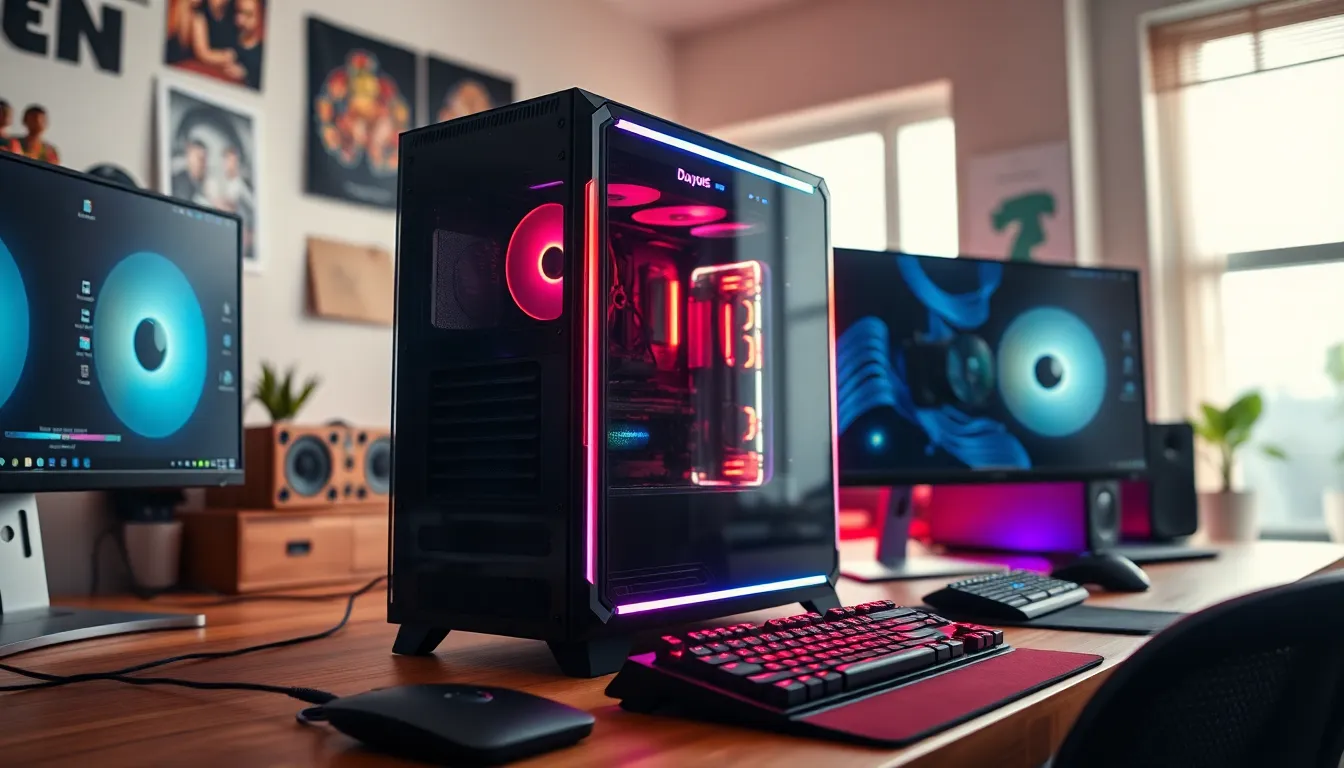In a world where streaming your favorite show is just as important as breathing, a weak LTE signal can feel like a personal betrayal. Picture this: you’re all set to binge-watch the latest series, but instead, you’re stuck staring at that dreaded loading icon. Frustrating, right? Fear not, because boosting that signal on your iPhone is simpler than you think.
Table of Contents
ToggleUnderstanding LTE Signal
LTE signal represents a technology that delivers fast wireless communication for mobile devices. Enhancing the understanding of what LTE signals mean helps users appreciate their importance for daily activities.
What Is LTE Signal?
LTE stands for Long-Term Evolution, the standard for high-speed wireless communication. This technology employs various frequencies to transmit data efficiently. iPhones connected to LTE networks experience faster download and upload speeds compared to older technologies, like 3G. Users benefit from reduced latency with LTE, allowing seamless access to apps, videos, and online content. An LTE signal indicates the strength and stability of a user’s connection, which directly impacts performance.
Importance of Strong Signal
A strong LTE signal enhances streaming, browsing, and gaming experiences on iPhones. Consistently high signal strength leads to smooth interactions with apps, reducing buffering and loading times. In areas with weak signals, users experience disruptions, which can hinder productivity and enjoyment. Reliable connectivity largely depends on robust signal strength, making it essential for uninterrupted communication. Higher signal quality ensures clearer calls and faster data transfer, supporting business and personal needs effectively.
Common Causes of Weak LTE Signal
Weak LTE signals can frustrate users on an iPhone. Several factors contribute to this issue, impacting connectivity and performance.
Environmental Factors
Obstructions affect signal strength. Buildings, trees, and hills can block LTE signals from towers. Weather conditions, like heavy rain or snow, can also interfere. Moving into a basement or a structure made from thick materials often leads to reduced reception. Electromagnetic interference from devices, such as microwaves or radios, can disrupt signals as well. Recognizing these factors aids in troubleshooting.
Device Limitations
Older iPhone models may struggle with LTE signals compared to newer devices. Outdated software often leads to performance issues, affecting connection stability. An accumulated cache and lack of storage space might also impact the LTE signal’s effectiveness. If an iPhone has a cracked screen or damaged antenna, signal reception drops significantly. Regular device maintenance ensures optimized functionality.
Tips to Boost LTE Signal on iPhone
Weak LTE signals can disrupt streaming experiences. Implementing these tips can significantly enhance reception.
Update iPhone Settings
Adjusting iPhone settings often improves LTE signal. Access the settings menu and ensure Cellular Data is enabled. Verify that Roaming options are correctly configured, which can expand connectivity. Enabling “Low Data Mode” can also optimize data usage without sacrificing performance. Regularly check for software updates under General settings to download enhancements. Keeping the iPhone software updated ensures compatibility with network improvements, thereby enhancing the user experience.
Change Network Settings
Changing network settings can revitalize signal strength. Navigate to the settings menu and scroll to General. From there, tap Reset and choose Reset Network Settings. This action clears cached network configurations and allows the device to reconnect to networks fresh. It’s necessary to reconnect Wi-Fi and Bluetooth devices after performing this reset. Additionally, users can manually select their carrier within the Cellular settings, which might enhance connectivity in specific areas.
Utilize Airplane Mode
Utilizing Airplane Mode serves as a quick fix for cellular issues. Activating this mode disconnects all wireless communications instantly. After a brief wait, turning Airplane Mode off can refresh the iPhone’s network connection. This simple process often leads to better signal reception by forcing the device to search for available networks anew. Reconnecting through Airplane Mode can clear temporary glitches that affect LTE signal strength.
Additional Techniques
Several techniques can enhance LTE signal strength on an iPhone. Exploring these methods can lead to better connectivity and improved streaming experiences.
Use Wi-Fi Calling
Wi-Fi Calling offers a valuable alternative for users facing weak LTE signals. It enables calls and texts over Wi-Fi networks when cellular coverage is lacking, providing clarity in communication. To enable this feature, navigate to Settings, select Phone, and toggle on Wi-Fi Calling. This approach not only enhances call quality but also conserves cellular data usage. If Wi-Fi connections remain stable, the benefits extend to reliable service in areas with poor signal.
Adjust Location for Better Reception
Location plays a crucial role in LTE signal strength. Moving to areas with fewer obstructions can significantly improve reception quality. Shedding any barriers like buildings or trees increases the likelihood of accessing a stronger signal. Users can also experiment with positioning their iPhones near windows or higher elevations, allowing for better line-of-sight to cell towers. Encouraging frequent location changes can lead to discovering optimal spots for enhanced connectivity.
Improving LTE signal on an iPhone can transform the way users experience streaming and browsing. By implementing the strategies discussed users can enjoy clearer calls and faster data speeds. Regular maintenance and keeping the device updated are essential for optimal performance.
Utilizing features like Wi-Fi Calling and adjusting settings can lead to noticeable improvements. Additionally finding a better location or minimizing obstructions can make a significant difference in signal strength. With these tips in mind users can take control of their connectivity and enhance their overall mobile experience.




